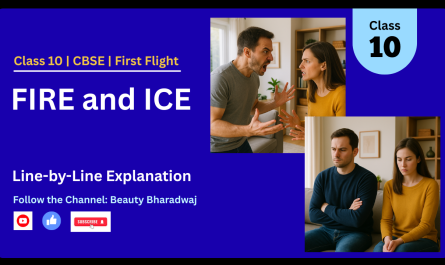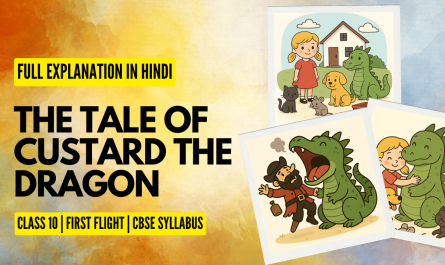Short Summary of the Poem
The poem is a simple conversation between the poet, Yeats, and a young girl named Anne Gregory. The poet tells her that if a young man becomes sad when she rejects him, it doesn’t mean he truly loves her. He might just be attracted to her beautiful yellow hair and her looks. The poet explains that true love is when someone loves you for your inner qualities, not for your outer appearance.
Anne then replies that she will dye her hair another color—maybe black, brown, or any other shade—so that she looks less attractive. She hopes that this way, she might find someone who loves her for who she really is. In the end, the poet tells her that he heard a religious man say only God loves us for what we truly are—not for our looks, but for our inner beauty.

Main Theme of the Poem
W. B. Yeats’s poem “For Anne Gregory” mainly talks about the idea of ideal beauty and how it influences people. In the poem, the speaker—who is Yeats himself—praises Anne Gregory and explains to her the difference between inner beauty and outer beauty.
The poem shows that people are mostly attracted to outer beauty, which we have all seen and experienced in our own lives. It also shows how some people are even willing to change themselves just to be liked by others. At the same time, the poem points out that sometimes love is only at the surface level and not truly deep from within.

Poetic Devices used in the Poem
- Metaphor: honey-coloured Ramparts at your ear, Anne ke hair ko compare kiya gaya hai to the ramparts of a fort
- Alliteration: repetition of a consonant ‘s’ sound at the start of two consecutive words. For example in the second stanza- Set Such. Aur last stanza me- That he had found a text to prove and- And not your yellow hair.
Line-by-line explanation of the Poem
Stanza 1
“Never shall a young man,
Thrown into despair
By those great honey-coloured
Ramparts at your ear,
Love you for yourself alone
And not your yellow hair.”
Explanation
The poet says that no young man would ever love Anne Gregory for who she truly is from the inside. His main attraction would always be her honey-colored yellow hair. These beautiful locks fall over her ears like a rampart (the boundary wall of a fort), hiding her real personality.
Think about it — if everyone liked your friend only because of their hairstyle or looks, but ignored their true qualities like kindness, helpfulness, or sense of humor, wouldn’t that feel unfair? That’s exactly what’s happening with Anne Gregory.
In exams, the question often asked is — “What do the yellow hair symbolize?”
Answer: They represent outer beauty, which prevents people from seeing a person’s inner beauty.

Stanza 2
“But I can get a hair-dye
And set such colour there,
Brown, or black, or carrot,
That young men in despair
May love me for myself alone
And not my yellow hair.”
Explanation
Anne Gregory replies that she will change the color of her yellow hair — maybe to brown, black, or carrot. By doing this, she will look less attractive, and perhaps a man will then love her for her inner personality rather than her outer beauty. This shows that outer beauty is temporary and can be changed, but true inner qualities are permanent.
In exams, the question often asked is — “What does Anne want to prove by dyeing her hair?”
Answer: She wants to prove that true love should be based on inner beauty, not physical appearance.

Stanza 3
“I heard an old religious man
But yesternight declare
That he had found a text to prove
That only God, my dear,
Could love you for yourself alone
And not your yellow hair.”
Explanation
The poet concludes by saying that he once heard a religious man say that only God loves a person for who they truly are, not for how they look. In other words, humans often get stuck on external beauty, while God values our inner qualities.
Even in real life, think about it — when people admire someone just for their looks, fashion, or money, that connection doesn’t last long. But when someone respects you for your nature, honesty, and behavior, that’s what a real bond means.
So that was W.B. Yeats’s poem “For Anne Gregory.”
For exams, remember these keywords:
- Outer beauty vs Inner beauty
- Temporary vs Permanent
- True love vs Superficial love
- Only God loves truly
A common exam question is —
“According to the old religious man, who can love Anne for herself alone?”
Answer: Only God.




